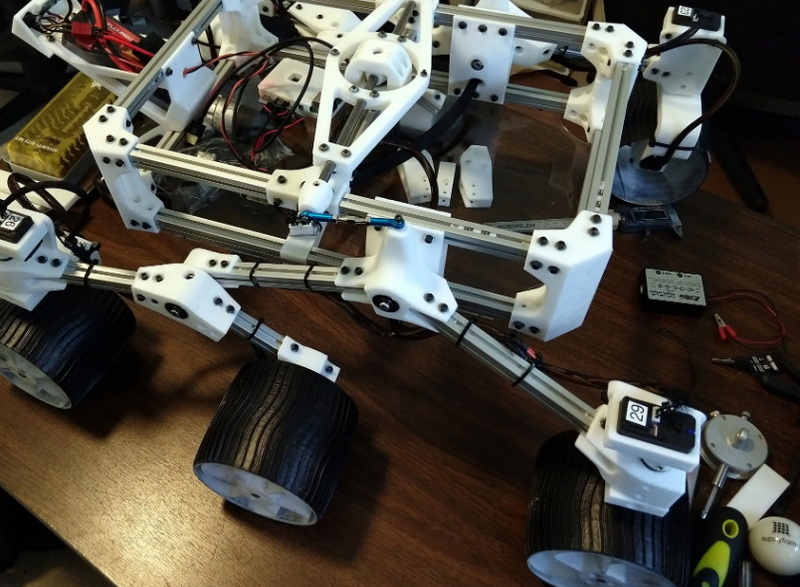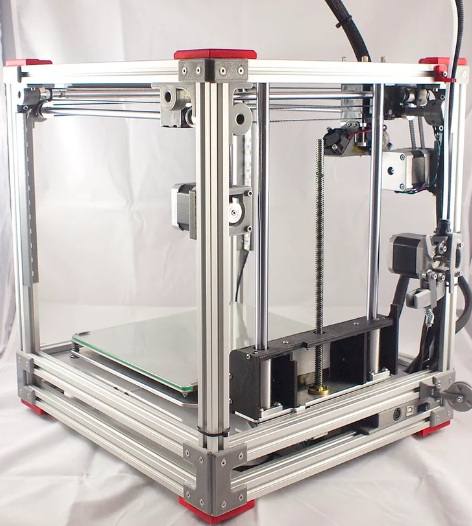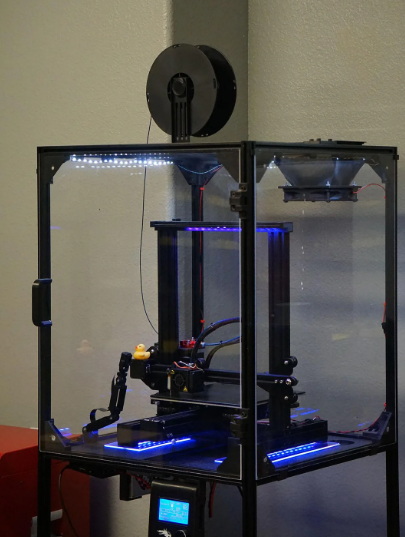Content Menu
● Understanding Aluminum Extruders
>> Types of Extruders
● Benefits of Using a DIY Aluminum Extruder
>> 1. Enhanced Durability and Longevity
>> 2. Improved Print Quality
>> 3. Lightweight Design
>> 4. Thermal Conductivity
>> 5. Cost-Effectiveness
● Building Your Own Aluminum Extruder
>> Materials Needed
>> Step-by-Step Guide
● Customization and Upgrades
>> 1. Dual Extrusion
>> 2. Filament Monitoring System
>> 3. Enhanced Cooling Systems
● Maintenance Tips for Your Aluminum Extruder
● Troubleshooting Common Issues
>> 1. Filament Slippage
>> 2. Clogged Nozzle
>> 3. Inconsistent Extrusion
● Conclusion
● FAQ
>> 1. What are the advantages of using an aluminum extruder over plastic?
>> 2. Can I use different types of filaments with an aluminum extruder?
>> 3. How do I maintain my DIY aluminum extruder?
>> 4. Is it difficult to build a DIY aluminum extruder?
>> 5. What tools do I need to build an aluminum extruder?
In the rapidly evolving world of 3D printing, the choice of components can significantly impact the quality and efficiency of your prints. One such critical component is the extruder. Among various options available, a DIY aluminum extruder stands out for its numerous benefits. This article delves into the reasons why choosing a DIY aluminum extruder can enhance your 3D printing experience, alongside practical insights into its construction, advantages, and maintenance.

Understanding Aluminum Extruders
An aluminum extruder is a device that feeds filament into a 3D printer's hot end, where it is melted and deposited layer by layer to create a three-dimensional object. The extruder's design and material significantly influence the performance of the printer.
Types of Extruders
1. Direct Drive Extruders: These are mounted directly on top of the hot end, providing better control over filament feeding, especially for flexible materials. This setup allows for precise control and is ideal for printing with materials like TPU or nylon.
2. Bowden Extruders: In this setup, the extruder motor is located away from the hot end, reducing weight on the moving print head and allowing for faster printing speeds. However, it requires more tuning for retraction settings to prevent filament oozing or stringing.
Benefits of Using a DIY Aluminum Extruder
Choosing a DIY aluminum extruder offers several advantages:
1. Enhanced Durability and Longevity
Aluminum is known for its strength and resistance to wear and tear. Unlike plastic or other materials, aluminum extruders can withstand continuous use without significant degradation. This durability translates to a longer lifespan and reduced need for frequent replacements, saving both time and money in the long run.
2. Improved Print Quality
A well-designed aluminum extruder ensures consistent filament feeding, which is crucial for high-quality prints. The rigidity of aluminum minimizes vibrations during operation, leading to better layer adhesion and overall print quality. This consistency is particularly important for detailed prints or models requiring precise layering.
3. Lightweight Design
Aluminum has an excellent strength-to-weight ratio, meaning that using it in your extruder reduces the overall weight of your 3D printer. This reduction is particularly beneficial in Bowden setups where minimizing weight on the print head allows for faster movements and higher print speeds. Faster print speeds can significantly reduce the time required to complete large prints.
4. Thermal Conductivity
Aluminum's thermal conductivity helps dissipate heat generated during printing, preventing overheating and potential clogs in the nozzle. This property is essential when working with temperature-sensitive materials like ABS or PETG, which require precise temperature control to print successfully.
5. Cost-Effectiveness
DIY aluminum extruders can be more affordable than their commercial counterparts. The manufacturing process for aluminum is efficient, allowing for lower costs without compromising quality. Additionally, building your own extruder allows you to customize it according to your specific needs, potentially saving money by avoiding unnecessary features.

Building Your Own Aluminum Extruder
Creating a DIY aluminum extruder involves several steps:
Materials Needed
- Aluminum extrusion profiles (e.g., 2020 or 3030 series)
- Stepper motor
- Filament drive gears
- Hot end assembly
- Cooling fans
- Connectors and fasteners
Step-by-Step Guide
1. Design Your Extruder: Use CAD software to design your extruder layout, ensuring it accommodates all necessary components. Consider factors like space constraints, ease of assembly, and accessibility for maintenance.
2. Cut Aluminum Profiles: Measure and cut your aluminum profiles to size using appropriate tools like a miter saw or band saw. Ensure precise cuts to avoid any misalignment during assembly.
3. Assemble Components: Start by attaching the stepper motor to the aluminum frame followed by the filament drive gears. Use appropriate fasteners to secure these components firmly.
4. Install Hot End: Mount the hot end assembly securely onto the frame ensuring proper alignment with the filament path. This step is critical for maintaining consistent filament flow.
5. Add Cooling Solutions: Install cooling fans to maintain optimal temperatures during printing. Proper cooling can prevent overheating and improve print quality.
6. Test Functionality: Before full-scale use, run tests to ensure that filament feeds smoothly without slippage or jams. Adjust the tension on the filament drive gears as needed.
Customization and Upgrades
One of the significant advantages of building a DIY aluminum extruder is the ability to customize and upgrade it as needed. Here are some ways you can enhance your extruder:
1. Dual Extrusion
Adding a second extruder allows you to print with two different colors or materials simultaneously. This setup requires additional hardware and software configurations but offers greater versatility in print design.
2. Filament Monitoring System
Integrating a filament monitoring system can alert you when the filament is running low or has broken. This feature helps prevent failed prints due to filament exhaustion.
3. Enhanced Cooling Systems
Upgrading cooling systems with more powerful fans or even liquid cooling can improve thermal management, allowing for faster print speeds and better print quality.
Maintenance Tips for Your Aluminum Extruder
To ensure longevity and optimal performance of your DIY aluminum extruder:
- Regularly check for wear on gears and bearings.
- Clean any accumulated dust or debris from moving parts.
- Ensure that all connections are secure to prevent vibrations.
- Lubricate moving components as needed to reduce friction.
Troubleshooting Common Issues
Sometimes, issues may arise during operation. Here are some common problems and their solutions:
1. Filament Slippage
- Cause: Insufficient tension on the filament drive gears.
- Solution: Adjust the tension on the gears to ensure proper grip without over-tightening.
2. Clogged Nozzle
- Cause: Debris or overheating.
- Solution: Clean the nozzle with a needle or replace it if necessary. Ensure proper cooling and temperature control.
3. Inconsistent Extrusion
- Cause: Poor filament quality or incorrect temperature settings.
- Solution: Check filament quality and adjust temperature settings according to the material's specifications.
Conclusion
Opting for a DIY aluminum extruder can significantly elevate your 3D printing capabilities. With its durability, lightweight design, improved print quality, thermal efficiency, and cost-effectiveness, an aluminum extruder is an excellent investment for both hobbyists and professionals alike. By building your own extruder, you not only gain hands-on experience but also have the flexibility to customize it according to your specific needs.

FAQ
1. What are the advantages of using an aluminum extruder over plastic?
Aluminum extruders offer superior durability, resistance to wear, better thermal conductivity, and improved stability during printing compared to plastic extruders.
2. Can I use different types of filaments with an aluminum extruder?
Yes, aluminum extruders are compatible with a wide range of filaments including PLA, ABS, PETG, TPU, and nylon.
3. How do I maintain my DIY aluminum extruder?
Regular maintenance includes checking for wear on components, cleaning dust buildup, lubricating moving parts, and ensuring secure connections.
4. Is it difficult to build a DIY aluminum extruder?
While building a DIY aluminum extruder requires some technical knowledge in design and assembly, many resources are available online that provide step-by-step guidance.
5. What tools do I need to build an aluminum extruder?
Basic tools include a miter saw or band saw for cutting profiles, Allen wrenches for assembly, and possibly CAD software for design.






















